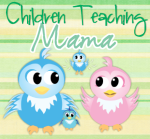Surface of the human skin is real heaven for microbes. Warm, moist skin is the perfect place for growth and development of fungus. Sweat, fat and dead cells feed billions of tinny organisms. In most cases, we are not even aware of them. But, under certain circumstances fungus, which belongs to our natural flora, can get out of hand and cause certain diseases. One of these conditions is tinea versicolor or sun fungus.
This disease is known also under the name pitryriasis versicolor and it is a chronic surface infection characterized by similar, discolored spots on the upper parts of the body, neck and arms. Doctor Medica and other medical professionals call it a surface disease because it affects only the upper parts of epidermis. Spots appearing on patient’s body are of the same color.
Sun fungus is caused by fungus such as Malasssezia globosa and Malassezia sympodialis. These microorganisms are dimorph which means that they can obtain several different forms. Funguses live only in fatty acids that can be found on human body. This is why we can find it on parts of our skin that are extremely full of fats such as face, chest, upper back and shoulder. It is present in outer layers of skin which we call stratum corneum and which consists of dead cells and hair follicles. Given that fungus cannot penetrate deeper layers of the skin, they will not cause any severe inner infections.
Like any other type of fungus, this disease is common for summer. In tropical regions, it is present during whole year. People, who are prone to this illness, may suffer from it each and every
summer. Hot and moist environment can facilitate development and multiplication of these organisms. Disease is most common for individuals who are in their puberty. Sweat glands are working overtime in their body which creates excellent surface for fungus. Naturally, adolescents who have normal skin, without excessive fat or sweat, will rarely suffer from this condition. As we get older, production of fat is reduced so risk of contracting this illness is decreased.
Tinea versicolor is asymptomatic which means that, besides rash, there will be no further inconvenience such as itching. Fungus usually appears in a form of symmetric spots. Skin may be scaling on the surface, especially if the patient is scratching the area. Rash may spread to neck and face and then to arms.
Ketoderm is one of the best solutions for this particular problem. This drug comes in many forms such as cream, oil, shampoo and ointment. Besides sun fungus, it can also treat other types of fungal infections. Drug is applied on the surface of the skin. However, patient must be careful and avoid applying it on mucous membrane. Depending on the form, different dosage will be recommended. In most cases, patient shouldn’t use it more often than once or twice per day. Use of Ketoderm can result in various side effects. Luckily, most of them are very rare so patients shouldn’t be overly worried.
26.8.15
18.8.15
How To Make Your Stairs Completely Baby Proof
If your child has started crawling, or maybe even walking recently, then the chances are that they have gone straight to the stairs and tried to climb them. It can be a terrifying you in the process. So, with this in mind, here are a few tips to help keep the stairs safe, secure and you relaxed.
Keep Them Away From Stairs (as often as possible)
Ok, starting an article about baby-proofing the staircase in your home with the oh-so-simple advice of ‘keep the baby away from the stairs’, seems more than a little unhelpful. However, this is actually a really very useful suggestion because, by keeping the baby away from the stairs, you are limiting their contact with them and therefore, keeping them safe.
Buy a baby gate (or two)
When babies become toddlers and get more mobile, one of the best ways to protect your baby is by getting a couple of gates to keep them away from the top and also, the bottom of the stairs. The baby gate that you buy will depend on your staircase and your needs; it can be as simple as choosing a wooden gate over a metal gate, or a gate that you can screw into the wall over one that you can screw into to the banister itself. Stores like Tesco stock a variety of different baby gates.
When purchasing a baby gate, be sure to think about your home first and what needs to be done to prepare.
Image by Dave Herholz used under the Creative Commons License.
Keep Them Away From Stairs (as often as possible)
Ok, starting an article about baby-proofing the staircase in your home with the oh-so-simple advice of ‘keep the baby away from the stairs’, seems more than a little unhelpful. However, this is actually a really very useful suggestion because, by keeping the baby away from the stairs, you are limiting their contact with them and therefore, keeping them safe.
Buy a baby gate (or two)
When babies become toddlers and get more mobile, one of the best ways to protect your baby is by getting a couple of gates to keep them away from the top and also, the bottom of the stairs. The baby gate that you buy will depend on your staircase and your needs; it can be as simple as choosing a wooden gate over a metal gate, or a gate that you can screw into the wall over one that you can screw into to the banister itself. Stores like Tesco stock a variety of different baby gates.
When purchasing a baby gate, be sure to think about your home first and what needs to be done to prepare.
- Research types of baby gates. If you have an open staircase, look for a 3-in-1 gate, which extends to create a protective playpen around the bottom of the stairs. Please note, pressure mounted baby gates are designed to be used for rooms on the same floor, but not for stairs.
- Declutter everything, especially the stairs. Some people use their staircase as a place to store things, like books and clothes, but when you have small children in your home, this cannot be an option. When starting to declutter don’t just limit yourself to the stairs, but also the area around the stairs.
- Rearrange furniture. Move furniture and other items that a toddler could climb on to bypass the stair gate and access the stairs, such as bookcases and chairs. Also, make sure that both the entrance and exit of the staircase is clear, so the kids don’t trip.
- Don’t forget the railing! The banister can also cause problems, as young children can fall down the stairs if they don’t use it correctly. Look into buying a banister guard — a sheet of clear plastic or netting that covers up all the gaps in the banister — if you think this will be a problem.
- Carpet the stairs. Carpet is much easier for young children to work with and, if they should take a tumble coming down the stairs, it’ll be much softer than hardwood flooring.
Image by Dave Herholz used under the Creative Commons License.










